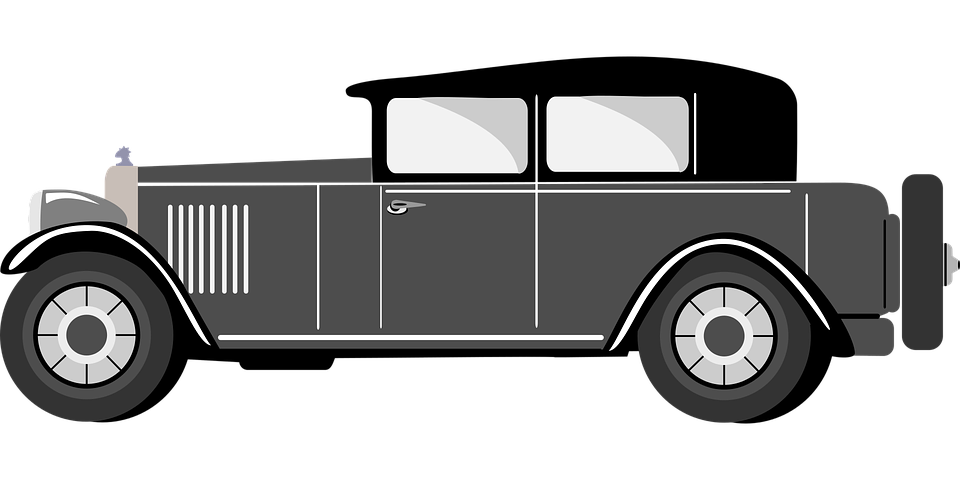


Mobile users:
For best results, view in Landscape mode.
Chevrolet:
In 1908, General Motors was founded by
William C. Durant, as a holding
company for Buick.
In 1909, GM purchased the Rapid Motor Vehicle Company
of Pontiac, Michigan, forming the basis of the General
Motors Truck Company, from which the "GMC Truck"
brand name was derived.
In 1911, Swiss automotive engineer Louis Chevrolet co-founded
the Chevrolet Motor Company in Detroit with William C. Durant
and investment partners William Little, former Buick owner
James H. Whiting, Dr. Edwin R. Campbell (son-in-law of Durant)
and in 1912 R. S. McLaughlin CEO of General Motors
in Canada.
Durant was cast out from the management of General Motors
in 1910, a company which he had founded in 1908.
In 1904 he had taken over the Flint Wagon Works and
Buick Motor Company of Flint, Michigan.
He also incorporated the Mason and Little companies.
Chevrolet first used the "bowtie emblem" logo in 1914 on
the H series models (Royal Mail and Baby Grand)
and The L Series Model (Light Six).
Louis Chevrolet had differences with Durant over design
and in 1914 sold Durant his share in the company.
By 1916, Chevrolet was profitable enough with successful sales
of the cheaper Series 490 to allow Durant to repurchase a
controlling interest in General Motors.
After the deal was completed in 1917, Durant became president
of General Motors, and Chevrolet was merged into GM as a
separate division.
Beginning also in 1919, GMC commercial grade trucks were
rebranded as Chevrolet, and using the same chassis of Chevrolet
passenger cars and building light-duty trucks.
GMC commercial grade trucks were also rebranded as
Chevrolet commercial grade trucks, sharing an almost identical
appearance with GMC products.
Chevrolet continued into the 1920s, 1930s, and 1940s competing
with Ford, and after the Chrysler Corporation formed Plymouth
in 1928, Plymouth, Ford, and Chevrolet were known
as the "Low-priced three".
Chevrolet had a great influence on the American
automobile market during the 1950s and 1960s.
In 1953 it produced the Corvette, a 2-seater sports car with
a fiberglass body.
In 1957 Chevy introduced its first fuel injected engine.
Dodge:
In 1900, Horace and John Dodge founded the
Dodge Brothers Company in Detroit, and quickly
found work manufacturing precision engine
and chassis components for the city's growing
number of automobile firms.
Chief among these customers were the established
Olds Motor Vehicle Company and the then-new
Ford Motor Company.
Their reputation brought business from Ransom Olds,
the first automaker to use an assembly line.
Dodge Brothers’ plant made thousands of
engines and transmissions for Oldsmobiles, which soon had
a 30% share of car-building in the US in 1903.
In 1913, Dodge Brothers announced that they
would stop building Ford cars and would design, build,
and sell their own car.
Even as they built their last Fords, the Dodge Brothers expanded
their manufacturing plant and built a new national sales network
and advertising campaign.
By 1914, John and Horace had designed a car of their own,
the four-cylinder Dodge Model 30.
Marketed as a slightly more upscale competitor to the ubiquitous
Ford Model T, it pioneered or made standard many features
later taken for granted: all-steel body construction;
12-volt electrical system (6-volt systems would remain the norm
until the 1950s);
35 horsepower (versus the Model T's 20), and sliding-gear transmission
(the best-selling Model T would retain an antiquated planetary
design until its demise in 1927).
As a result of this, and the brothers' well-earned reputation for
the highest quality truck, transmission and motor parts they made
for other successful vehicles, Dodge Brothers cars were ranked at
second place for U.S. sales as early as 1916.
Dodge Brothers cars continued to rank 2nd place in American
sales in 1920.
However, the same year, tragedy struck as John Dodge was struck
by pneumonia in January.
His brother Horace then died of cirrhosis in December of the same year
(reportedly out of grief at the loss of his brother, to whom
he was very close).
With the loss of both founders, the Dodge Brothers Company passed
into the hands of the brothers' widows, who promoted long-time
employee Frederick Haynes to the company presidency.
During this time, the Model 30 was evolved to
become the new Series 116.
However, throughout the 1920's Dodge gradually lost its
ranking as the third best-selling automobile manufacturer, slipping
down to 7th in the U.S. market.
Henry Ford had gone through two bankruptcies, and couldn’t find
financiers or suppliers who would work on credit.
That may be why, when he approached the Dodge Brothers,
they demanded a 10% stake in Ford’s new company, and the right
to all of Ford’s assets in case of another bankruptcy.
In return, they provided $3,000 in cash, $7,000 in parts, and their
mechanical and business acumen.
When Ford started making its first cars, Dodge had 135 employees
making parts, and Ford had 12.
Dodge Brothers built every part of the Ford car except the seats
and tires and possibly the radiators and body too.
The Dodge Brothers made money building the cars, and also through
their stock, getting $10,000 in dividends in the first year.
The Dodge brothers were tough, but fair, they gave up their
other customers, and created the production drawings and
all mechanical parts for Ford's new company.
The brothers also redesigned the car's rear axle, engine, and other
key parts, which likely made the difference between Ford's
past failures and his new success.
Without the Dodges, Henry Ford would likely have ended up just
another machinist.
